APAC Wireless Charging Market Size
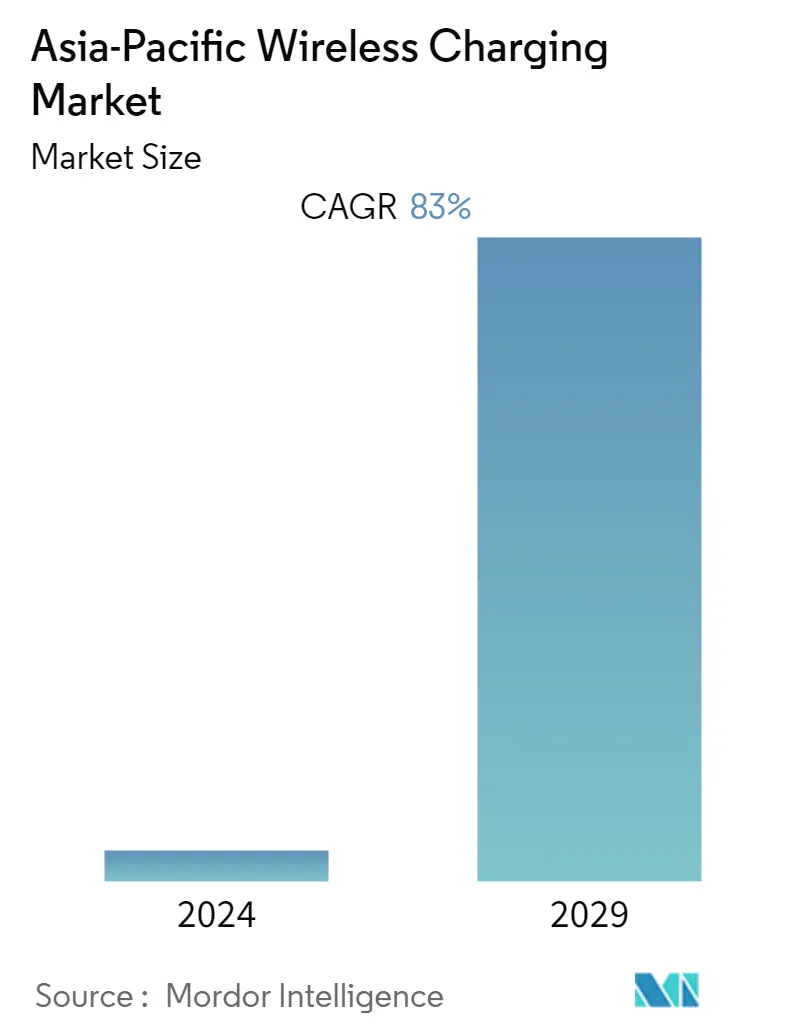
| Study Period | 2019 - 2029 |
| Base Year For Estimation | 2023 |
| Forecast Data Period | 2024 - 2029 |
| Historical Data Period | 2019 - 2022 |
| CAGR | 83.00 % |
| Market Concentration | Low |
Major Players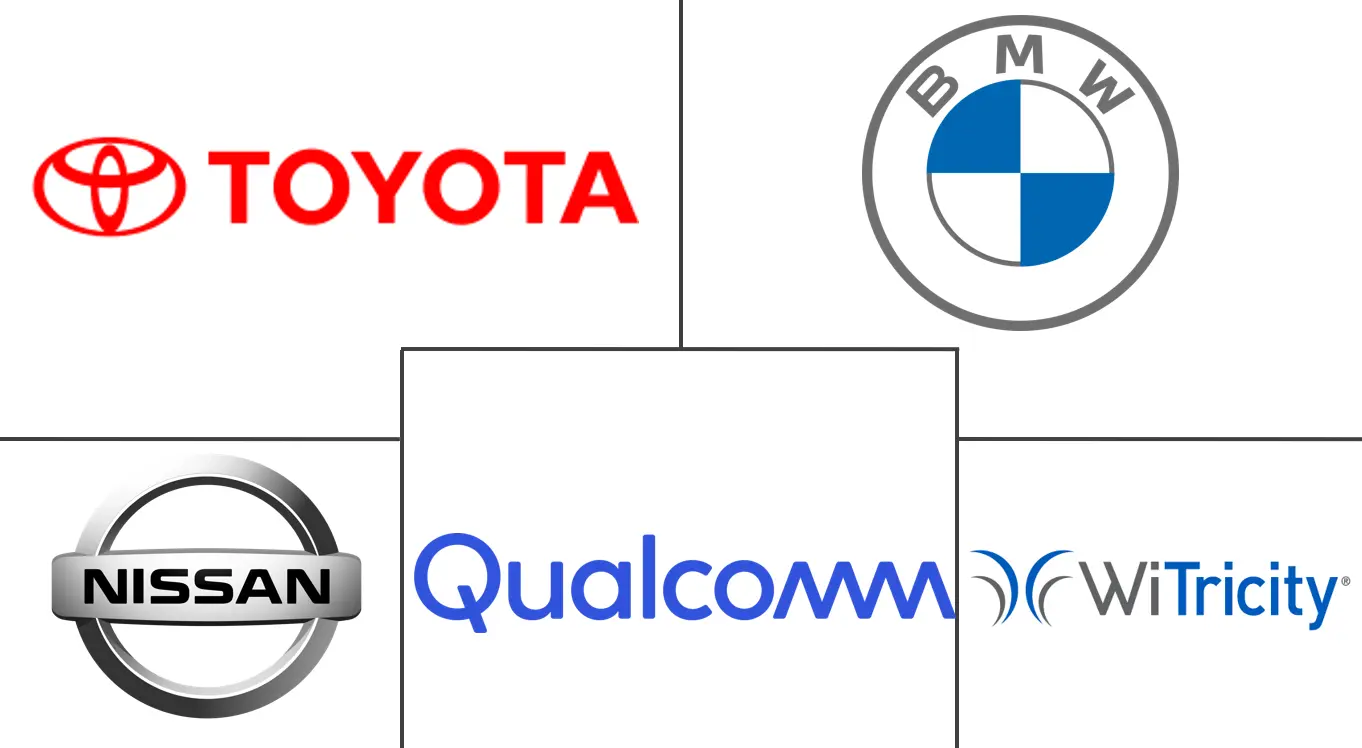
*Disclaimer: Major Players sorted in no particular order |
APAC Wireless Charging Market Analysis
The Asia-Pacific wireless charging for electric vehicle market was valued at USD 9.04 million and is expected to reach USD 124 million over the next five years, registering a CAGR of 83% during the forecast period.
- Over the long term, some of the major factors driving the growth of the market studied are the enactment of stringent emission and fuel economy norms, government incentives, and the increasing sales of electric vehicles, which are generating a demand for charging stations. For instance,
- In June 2023, Exeed launched its next-generation TXL midsize SUV, which is available in three models. This vehicle is equipped with a 24.6-inch wrap-around curved display screen and a Qualcomm Snapdragon 8155 chip, with such functions as multi-Bluetooth digital key and 50W mobile phone wireless charging.
- Apart from the high cost of electric vehicles, the primary concern for quite a few prospective electric vehicle users has been the unavailability of (plug-in electric vehicles (PEVs) docks. As a result of the plug-in aspect of electric vehicles, the electric automobile industry has faced formidable resistance.
- Many people who live in apartments and houses with no parking spaces face a problem where a car's plugging and charging can be difficult. The wireless charging technology makes it easy for people to find designated wireless charging stations and park their vehicles over the charging pad without any hassle.
- The Asia-Pacific wireless charging for electric vehicle market is driven by factors like increasing sales of electric vehicles, government initiatives to encourage charging infrastructures, and technological advancements in charging technology.
- China is leading with more than 50% of total patents in the wireless charging domain in the world. Most technology companies in the world, like Apple and Qualcomm, are still dependent on China for their products to be cost-effective and performance-efficient. After years of development, China recently announced a new national standard for wireless EV charging. The new Guo Biao (GB) standard is based on technology developed by WiTricity. WiTricity, along with the China Electric Power Research Institute (CEPRI), China Automotive Technology and Research Center (CATARC), and the CEC, has been actively working towards the Chinese EV wireless charging standardization process.
APAC Wireless Charging Market Trends
Increasing Sales of Electric Vehicles Driving the Wireless Charging Demand
- To meet the demand created by electric vehicle (EV) sales, governments are investing in developing charging infrastructure. To increase charging speeds, major economies are spending on research and development of charging technologies. Many players in the market are also exploring other charging methods, like wireless charging in electric vehicle charging, as range anxiety is still an obstacle to widespread acceptance of the adoption of electric vehicles.
- Despite the Asia-Pacific region being home to the largest low-income populations in the world, wireless charging is still expensive as most parts of the area need more supporting infrastructure for EV charging, as most countries are still in the early stages of adopting EVs.
- However, China, which is the largest EV market in the world, has been backed up by generous support from the government. China has extended the incentives related to the purchase of new energy vehicles (NEVs) till 2022. Electric car sales in China tripled to 3.3 million in 2021, accounting for roughly half of the global total.
- Sales increased significantly in Europe (by 65% to 2.3 million) and the United States. Chinese electric vehicles are typically smaller than those found in other markets. Along with lower manufacturing costs, this has resulted in a significant reduction in the price gap with traditional cars. In China, the median price of an electric car was only 10% higher than that of conventional offerings, compared to 45% to 50% in other major markets.
- India is also working towards making electric vehicles 30% of the total road traffic by 2030. The government is planning to make it mandatory for Uber and Ola to make 40% of their fleets electric by 2026.
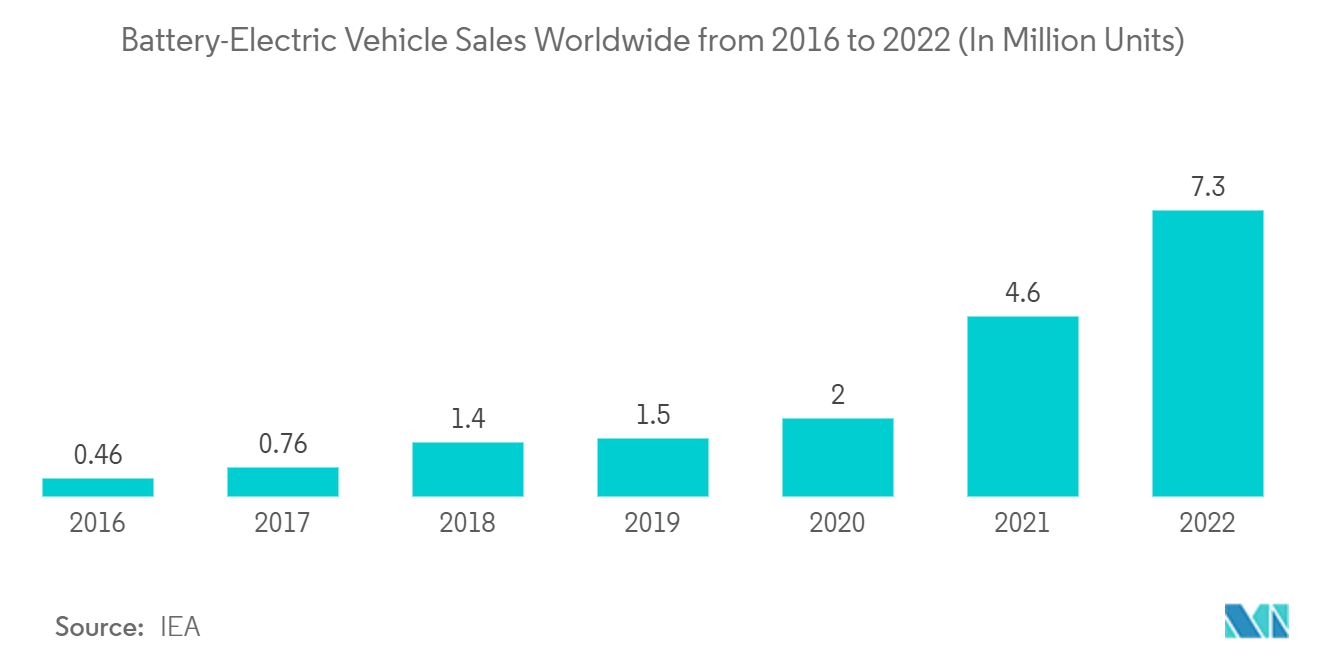
China is Leading the Electric Vehicle Demand in Asia-Pacific
- The Chinese electric vehicle (EV) charging station market is well supported by its battery electric vehicle market, which is backed by generous support from the government. For instance, in December 2022, The 'Action Implementation Plan of Zhejiang on Accelerating the Construction of Charging Infrastructure Along Highways" was developed collaboratively by the Zhejiang Provincial Communication Department, the Zhejiang Provincial Energy Bureau, and State Grid Zhejiang Electric Power Co., Ltd. By the end of 2022, 1,000 charging stations are expected to be built in provincial expressway service areas, with the number increasing to 1,800 by the end of 2023. With 600 charging spaces shall be built along ordinary highways in the province, and by the end of 2023, the number shall be increased to 880.
- 13 agencies, including the Sichuan Provincial Development and Reform Commission, issued the "Work Plan of Sichuan Province for Promoting the Construction of Charging Infrastructure for Electric Vehicles," setting the goal of constructing 200,000 charging facilities in the province by 2025 in order to realize full coverage of electric vehicle charging stations in counties and electric vehicle charging stands in towns.
- Over the last few years, the coastal region, which borders Hong Kong, has built hundreds of thousands of public charging points - the EV equivalent of gas pumps. According to the China Electric Vehicle Charging Infrastructure Promotion Alliance, Guangdong has the largest EV charging network in China, with 345,126 public chargers and 19,116 charging stations as of the end of September 2022. That's roughly three times the number of public chargers in the entire United States.
- Taxis, buses, and electric light vehicles are the three major vehicle segments that utilize charging stations in China. Apart from buses, which have the requirement for specialized captive infrastructure, the other vehicles majorly require public fast charging. Players in the country are focusing on the development of charging stations in the country, along with major players, who are also focusing on providing wireless fast charging features in the vehicles themselves. For instance, in July 2023, Zhengzhou Nissan Automobile Co., Ltd. started accepting pre-orders for the next-generation Paladin mid-to-large-size off-road SUV. The vehicle comes standard with such functions as 15W wireless fast charging.
- The rapid growth of electric vehicles and pro-EV policies in the country are expected to propel the growth of the market studied.
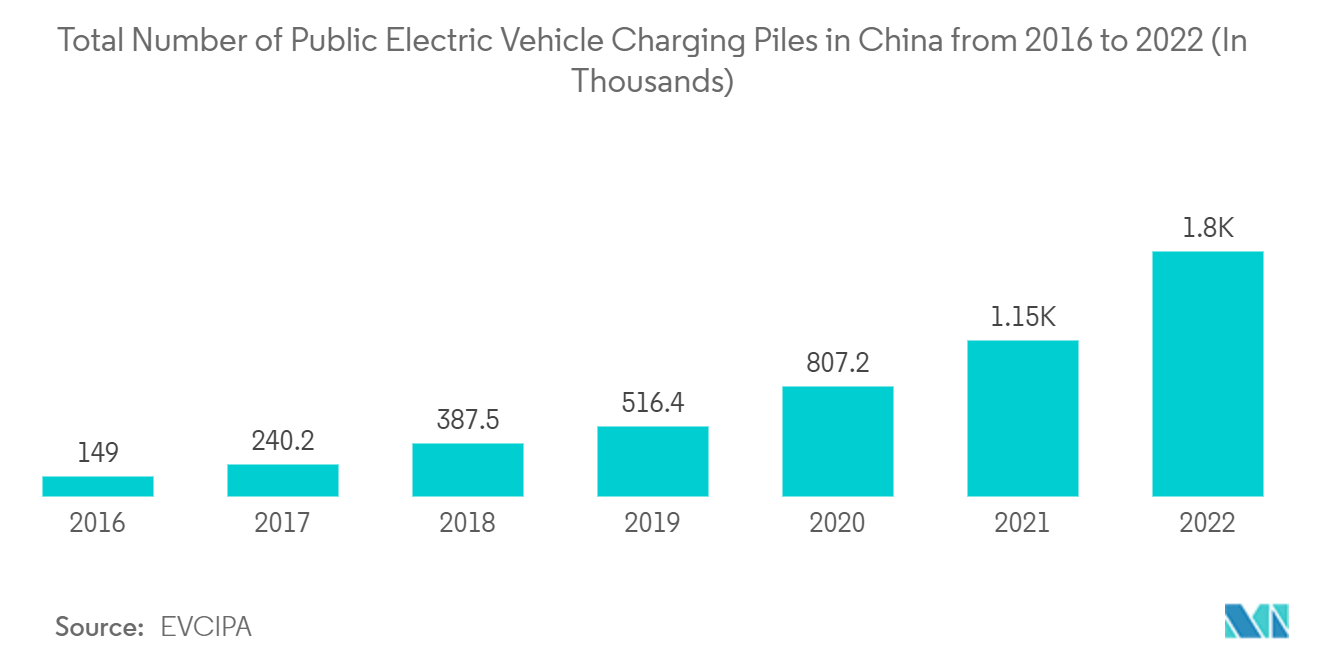
APAC Wireless Charging Industry Overview
The Asia-Pacific Wireless Charging For Electric Vehicle Market exhibits a consolidated landscape with key industry players such as Qualcomm, WiTricity, Nissan, Toyota, BMW, and various others dominating the market. These prominent companies are actively engaged in substantial research and development initiatives aimed at advancing wireless charging technology.
For instance, in April 2023, Dongfeng Motor (DFM) made a significant announcement during the grand opening of the 2023 DFM Spring Launch Conference held in Wuhan. During the conference, DFM unveiled a comprehensive range of charging technologies, spanning from traditional DC and AC charging solutions to cutting-edge super-fast charging technologies. Additionally, the company showcased its ongoing endeavors in advanced research related to wireless charging technologies.
APAC Wireless Charging Market Leaders
-
Toyota Motor Corporation
-
BMW AG
-
Nissan Motor Co., Ltd
-
Qualcomm Technologies
-
WiTricity Corporation
*Disclaimer: Major Players sorted in no particular order
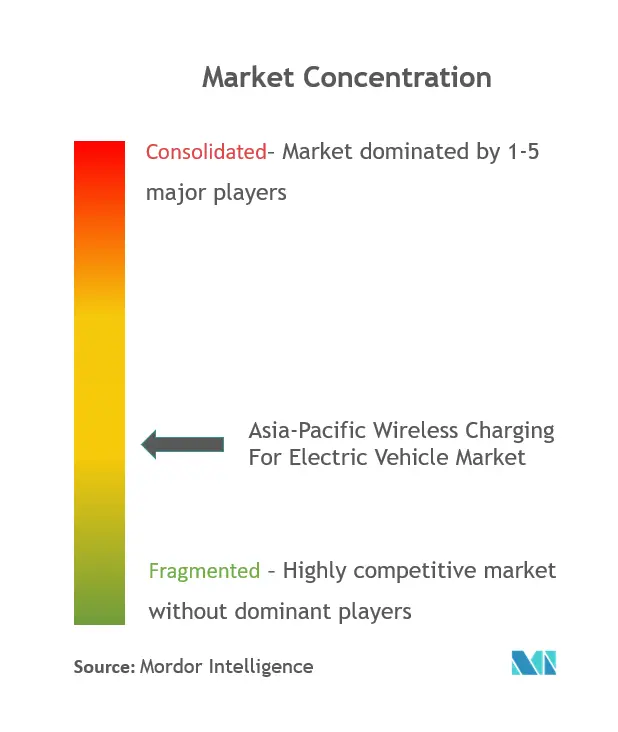
APAC Wireless Charging Market News
- June 2023: ST Microelectronics NV unveiled an array of cutting-edge products and solutions for the smart mobility sector during the MWC Shanghai event. Among the highlights was the debut of the ST P-BOX Solution, a groundbreaking technology set to revolutionize autonomous driving. Additionally, the company showcased its 100W Wireless Charging Solution, built upon the STWBC2-HP and STWLC99 platforms.
- June 2023: SAIC-GM proudly announced the commencement of deliveries for the inaugural batch of its innovative 5-seater intelligent electric sports utility vehicle (SUV), Buick's Electra E5. This groundbreaking vehicle boasts a host of advanced features, including the industry's first-ever battery management system, enabling seamless wireless connectivity. Furthermore, the vehicle incorporates the newly developed BEV HEAT thermal management system for optimal performance.
- May 2023: The Malaysian Minister of Investment, Trade, and Industry (MITI) revealed an investment milestone involving China-based EVE Energy Co., Ltd. (EVE Energy). EVE Energy has committed to a substantial USD 422.3 million project in Kulim, Malaysia. Concurrently, MITI is actively exploring policies and providing support for certification and verification processes related to charging systems, battery disposal initiatives, battery swapping, and wireless charging systems.
APAC Wireless Charging Market Report - Table of Contents
1. INTRODUCTION
1.1 Study Assumptions
1.2 Scope of the Study
2. RESEARCH METHODOLOGY
3. EXECUTIVE SUMMARY
4. MARKET DYNAMICS
4.1 Market Overview
4.2 Market Drivers
4.2.1 Growing Sales of Electric Vehicles Aiding Market Growth
4.3 Market Restraints
4.3.1 High Cost of Installing Wireless Chargers
4.4 Porter's Five Forces Analysis
4.4.1 Threat of New Entrants
4.4.2 Bargaining Power of Buyers/Consumers
4.4.3 Bargaining Power of Suppliers
4.4.4 Threat of Substitute Products
4.4.5 Intensity of Competitive Rivalry
5. MARKET SEGMENTATION (Market Size in Value USD)
5.1 By Vehicle Type
5.1.1 Battery Electric Vehicle
5.1.2 Plug-in Hybrid Vehicle
5.2 By Country
5.2.1 China
5.2.2 Japan
5.2.3 India
5.2.4 Australia
5.2.5 Rest of Asia-Pacific
6. COMPETITIVE LANDSCAPE
6.1 Vendor Market Share
6.2 Company Profiles*
6.2.1 Toyota Motor Corporation
6.2.2 BMW AG
6.2.3 Nissan
6.2.4 Qualcomm
6.2.5 WiTricity
6.2.6 Plugless
6.2.7 Hella Aglaia
6.2.8 Daimler AG
6.2.9 Tesla Motors
6.2.10 Bombardier
6.2.11 OLEV Technologies
6.2.12 HEVO Power
7. MARKET OPPORTUNITIES AND FUTURE TRENDS
APAC Wireless Charging Industry Segmentation
Wireless charging of electric vehicles is charging technology that primarily relies on resonant magnetic induction to transfer energy between a charging pad on the floor and another pad inside the vehicle.
The Asia-Pacific wireless charging for electric vehicle market is segmented by vehicle type (battery electric vehicle and plug-in hybrid vehicle) and country ( China, Japan, India, Australia, and Rest of Asia-Pacific).
The report offers market size and forecasts in value (USD) for all the above segments.
| By Vehicle Type | |
| Battery Electric Vehicle | |
| Plug-in Hybrid Vehicle |
| By Country | |
| China | |
| Japan | |
| India | |
| Australia | |
| Rest of Asia-Pacific |
APAC Wireless Charging Market Research FAQs
What is the current Asia Pacific Wireless Charging Market size?
The Asia Pacific Wireless Charging Market is projected to register a CAGR of 83% during the forecast period (2024-2029)
Who are the key players in Asia Pacific Wireless Charging Market?
Toyota Motor Corporation, BMW AG, Nissan Motor Co., Ltd, Qualcomm Technologies and WiTricity Corporation are the major companies operating in the Asia Pacific Wireless Charging Market.
What years does this Asia Pacific Wireless Charging Market cover?
The report covers the Asia Pacific Wireless Charging Market historical market size for years: 2019, 2020, 2021, 2022 and 2023. The report also forecasts the Asia Pacific Wireless Charging Market size for years: 2024, 2025, 2026, 2027, 2028 and 2029.
APAC Wireless Charging Technology Industry Report
Statistics for the 2024 APAC Wireless Charging Technology market share, size and revenue growth rate, created by Mordor Intelligence™ Industry Reports. APAC Wireless Charging Technology analysis includes a market forecast outlook 2029 and historical overview. Get a sample of this industry analysis as a free report PDF download.



